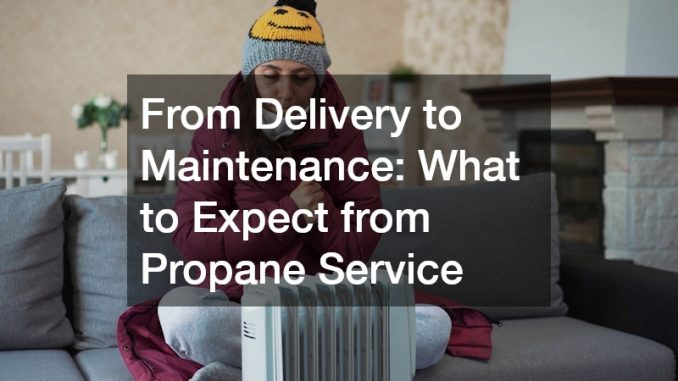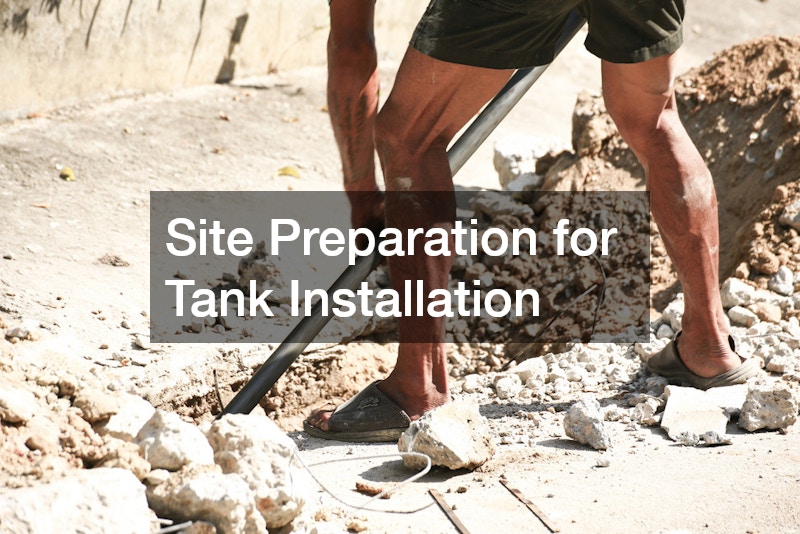
This article explores the journey of propane service from delivery, installation, and ongoing maintenance. Homeowners and businesses often have many questions about the process and what to expect, making this guide an essential reading for anyone relying on propane as a reliable and efficient source of energy. Propane offers a versatile energy solution, catering to a variety of needs including heating, cooking, and powering appliances, making it a critical component of modern energy strategy.
Delivery Scheduling and Timing
Propane delivery scheduling is influenced by factors such as demand, location, and the time of year. Rural areas might see less frequent deliveries due to travel logistics, while urban areas benefit from more regular schedules. Customers should communicate with their suppliers to ensure delivery aligns with their usage needs, particularly before the holiday and winter seasons when demand peaks.
To arrange for timely propane delivery, users can typically access online portals or direct customer service lines. These platforms allow homeowners and businesses to track usage and predict when the next delivery should occur. By anticipating needs based on actual consumption patterns, customers can ensure uninterrupted service.
Types of Propane Tanks
The type of propane tank chosen depends largely on the anticipated use and required storage capacity. Residential customers may opt for smaller above-ground tanks, commonly ranging from 120 to 500 gallons, adequate for typical household use. In contrast, commercial entities might require larger or even underground tanks that can support bigger energy needs or comply with specific zoning laws.
Above-ground tanks offer easy accessibility for maintenance and refueling but require ample space and consideration of aesthetic impacts. Underground tanks, though more expensive to install, preserve landscape aesthetics and are better insulated against temperature changes, providing more stable supply conditions. Each option requires careful evaluation of site conditions and intended usage to optimize cost and functionality.
Safety Precautions During Delivery
Safety is paramount during propane delivery due to the flammable nature of the gas. Delivery personnel are specially trained to follow strict protocols to minimize risks during transfer from truck to tank. Procedures include grounding equipment to prevent static discharge and ensuring the environment around the tank is clear of potential ignition sources.
Customers should create a clear path to the tank for the delivery vehicle and ensure animals are secured away from the area. Additionally, the presence of flammable materials or sources of ignition should be strictly avoided during delivery. These measures contribute to a safe and incident-free process, protecting both personnel and property.
Site Preparation for Tank Installation
Preparing a site for tank installation involves several critical steps to comply with safety and legal standards. Firstly, checking zoning requirements is essential, as these dictate the permissible locations and types of tanks that can be installed. Property owners must also verify that the selected site provides adequate clearance from structures and easements.
Clearing the area for installation ensures unobstructed access and facilitates subsequent maintenance tasks. Additionally, precise leveling is crucial to support the tank securely and prevent potential shifting due to soil settlement over time. Undertaking these preparation tasks helps streamline the installation process and mitigate post-installation issues.
Installation Steps and Best Practices
The installation of a propane system begins with setting the tank on its prepared foundation, ensuring stability and optimal positioning. Technicians then proceed with installing regulators and valves, facilitating proper pressure control throughout the system. Connections between the tank, piping, and appliances are methodically established to secure seamless energy flow.
Following these procedures, technicians perform a thorough leak test to confirm the integrity and safety of connections. This involves using special equipment to detect leaks, ensuring complete safety and compliance with standards. Adhering to these installation best practices ensures systems operate efficiently and safely immediately post-installation.
Connecting Appliances and Testing
Connecting propane appliances is a critical step that requires precise execution to guarantee efficiency and safety. Each appliance has specific requirements for connection, and technicians ensure all regulatory compliance is met through the setup process. Proper connection ensures optimal performance and prolongs the appliance lifecycle.
After connecting the appliances, comprehensive testing must be conducted to confirm they operate as intended with the new propane system. Technicians check for leaks and monitor appliance efficiency, making necessary adjustments to optimize system performance. Testing reassures that the setup is secure and ready for regular use.
Planning and Scheduling Maintenance Visits
Organizing maintenance visits is fundamental to the effective operation of a propane system. Establishing a planned schedule ensures inspections and maintenance tasks are conducted regularly without overlooked contingencies. Many providers offer maintenance plans that automate visit scheduling based on tank and appliance needs.
A roundup of the critical aspects covered—from delivery and storage to installation and ongoing maintenance—highlights the holistic approach needed for effective propane service. Choosing a reliable provider, understanding the process, and embracing proactive upkeep ensures a safe and efficient energy solution. A dedicated commitment to each phase of propane service fosters continuous performance and reassures users of safety and reliability in their energy use.

